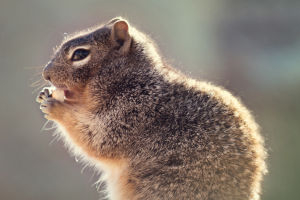Himalayan monal, is a captivating bird belonging to the pheasant family and is the national bird of Nepal, recognized as the "Nepalese pheasant." With its stunning plumage and vibrant colors, it stands as one of the world's most exquisite avian wonders.
Himalayan monal primarily inhabits Southeast Asia, including countries like Malaysia, Indonesia, and Thailand.
These birds favor tropical rainforests and mountainous regions, often seeking shelter in dark and humid environments.
The male rufous-tailed pheasant displays a striking appearance. With their long, resplendent tails adorned in vivid hues of red, blue, green, and purple, they captivate observers.
Females, although smaller in size, possess more modest plumage, typically in shades of brown or gray.
Rufous-tailed pheasants are ground-dwelling creatures, agile in both running and flying.
They sustain themselves on a diet comprising fruits, seeds, insects, and small vertebrates, frequently foraging within woodland areas.
This rare avian species faces numerous threats, including habitat destruction, illegal hunting, and illicit trade. To safeguard these pheasants and their habitats, many nations have implemented conservation measures such as establishing protected areas and prohibiting hunting.
As Nepal's national bird, the rufous-tailed pheasant symbolizes the country's rich natural and cultural heritage. The uniqueness and significance of this bird have prompted widespread interest in its conservation.
Through scientific research, environmental education, and conservation initiatives, we can ensure the sustainable preservation of this species within Nepal and worldwide, allowing future generations to continue cherishing this magnificent national bird.
The beauty, allure, and enigmatic nature of the brown-tailed rainbow pheasant have garnered admiration and attention from people worldwide. It is our collective responsibility to protect this extraordinary bird and secure its existence on our planet.
With its remarkable appearance, the pheasant has emerged as a luminary of the natural world.
Distinguished among avian species, the rufous-tailed pheasant captivates with its long tail adorned in splendid reds, blues, and greens. These birds are nature's masterpieces, boasting unique color combinations and magnificent plumage.
Inhabiting tropical rainforests and mountainous regions, this species often conceals itself amidst dense vegetation. Proficient in running and flying, it gracefully maneuvers through both ground and branches.
The distinctive call of the brown-tailed rainbow pheasant further sets it apart. The male emits a melodious song, resonating through the dense forest, serving as a means to attract mates and assert territorial dominance.
Unfortunately, the pheasant's survival is imperiled. Habitat destruction and illegal hunting have significantly impacted their population and distribution. Consequently, protecting the rufous-tailed pheasant has become a matter of utmost importance.
Numerous countries have taken proactive measures to safeguard these birds and their habitats.
Initiatives include the establishment of protected areas, reinforced legislation, heightened public awareness, and scientific research, all playing pivotal roles in preserving this rare avian species.
As custodians of Earth's natural treasures, we bear the responsibility of safeguarding the pheasant and its interconnected ecosystems.
Only through collaborative efforts can we ensure the continued existence of this remarkable bird, bestowing upon us and future generations a perpetual source of wonder and appreciation.


